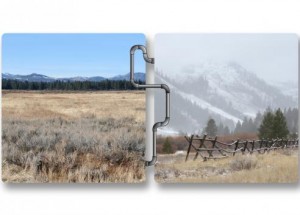 Squaw Valley Public Service District is looking for a backup water supply to meet the needs of its customers in the unlikely circumstance of a contamination event to the Squaw Valley Aquifer. One of the options is a $30 million alternative to pump water from Martis Valley. The problem is not a new one; SVPSD has been considering it for twenty years. In a 2009 study, side drainages along the Truckee River were considered, but were found to be inadequate in both quantity and quality. In the same study it was found that drilling new production wells in the Squaw Valley Aquifer had become more difficult due to the limited capacity of the aquifer to provide adequate yields in both quantity and quality of water.
Squaw Valley Public Service District is looking for a backup water supply to meet the needs of its customers in the unlikely circumstance of a contamination event to the Squaw Valley Aquifer. One of the options is a $30 million alternative to pump water from Martis Valley. The problem is not a new one; SVPSD has been considering it for twenty years. In a 2009 study, side drainages along the Truckee River were considered, but were found to be inadequate in both quantity and quality. In the same study it was found that drilling new production wells in the Squaw Valley Aquifer had become more difficult due to the limited capacity of the aquifer to provide adequate yields in both quantity and quality of water.
The Squaw Valley Aquifer has a sustainable yield estimated at 1,524 acre feet of water. The SVPSD would only need 1,500 acre feet in the contamination scenario to adequately service its customers. The Martis Valley Aquifer is estimated to have sustainable yields of 32,745 to 35,168 acre feet of water per year. Three other agencies draw water from Martis Valley: Truckee Donner Public Utility District, Northstar Community Services District and Placer County Water Agency. At the present time, this amounts to approximately 27 percent of the available water.
This controversy arises in the middle of planning for the Village at Squaw Valley Expansion. While KSL has said it can provide adequate water for the development from the aquifer beneath its property, it would be moot in the event of the contamination of the aquifer. It’s all the same aquifer regardless of where you drill the well.
Moderate opposition to the idea has surfaced, but most interested parties are taking a watch and wait position. SVPSD has backed off the idea of immediately pursuing the Martis Valley option, and will instead consider all redundant water supply sources studied over the last 20 years and identify sources not previously considered. For more information on this issue, go to the Moonshine Ink website.



Leave a Reply